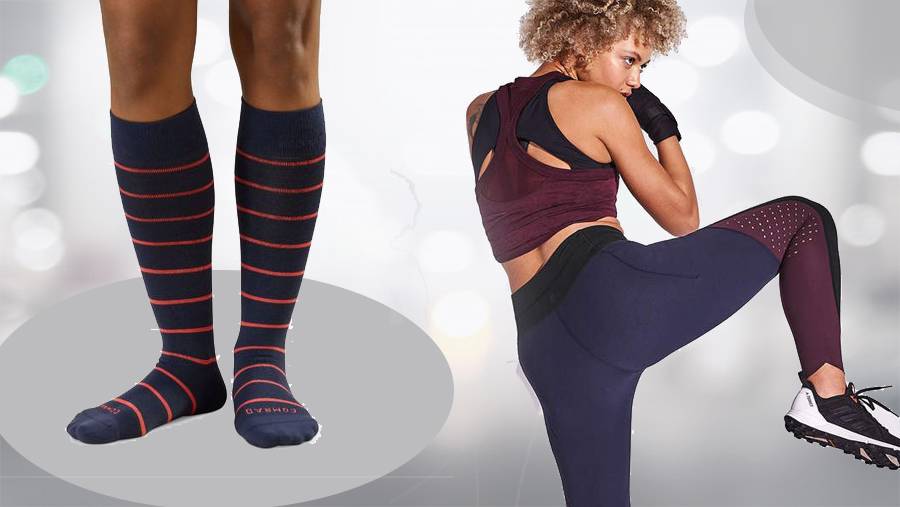
Hello
Select Address

The purpose and functionality of Anti Embolism Stockings (AES) are quite like that of compression stockings – the ones that are prescribed when you complain of acute leg pain!
Usually, lower leg pain is diagnosed with ailments like varicose vein, DVT (deep vein thrombosis), etc. Patients suffering from diabetes or sometimes simply obese individuals suffer from valve damage in their veins. Since veins are responsible for carrying waste blood from different body parts back to the heart, proper functioning of the valves (within the veins) is essential. When this gets disrupted, the waste blood is unable to travel upwards against gravity. Consequently, it starts pooling in the lower part of your legs. This is the anomaly that compression stockings work upon and is hence prescribed by doctors to such patients.
Choosing your Anti Embolism Stockings
Finding the right size is important. Before getting your pair of AES, carefully measure the calf circumference around the greatest position and the distance from the bend of the knee to the bottom of the heel of your leg and match it with the measurement in the size chart. In fact, after using these stockings for a while, if the user feels that his or her body size has changed, the legs need to be re-measured and, your stockings may have to be replaced too. Even when wearing stockings becomes uncomfortable, that is they sag or become loose, they need to be replaced. Remember, improper fittings may yield undesirable results that are not good for your health!
The proper use of AES
Anti-Embolism Stockings are used for medical purposes. Therefore, their proper use determines their effectiveness. Some major guidelines are enlisted below which will help one to follow a proper regime.
• Wear your stockings for the maximum period if you are out of bed. Only when you slip in at night, pull them off.
• You should take out your stockings while bathing or for other purposes. But that should not be more than 30 minutes.
• Do not roll down your stockings; it makes them less effective as each section of the stocking is woven according to the clinically-proven compression pattern.
• The stockings need to be washed after every 2-3 days at least!
• Avoid using oils, greasy moisturizers, glycerin or lanolin on your skin because they can affect the elastic fibers of these stockings.
• Your AES on an average can stand up to 30 washes. After this, they undergo certain wear and tear and tend to lose their effectiveness.
The difference between anti-embolism stockings and compression stockings
AES is majorly different from the medicated compression stockings in the level of compression. The difference in the compression amounts is related to the medical reason for which it has been recommended. Precisely, AES puts pressure of 8 – 18mmHg and compression stockings put pressure of 15 – 20mmHg or even higher. As a rule of thumb, the anti-embolism stockings are recommended to hospitalized or bed-ridden patients (mostly in post-surgery cases); the medical graduated compression stockings are mainly for ambulatory patients.
Ambulatory patients who are suffering from lymphatic disorders like chronic venous insufficiency, lymphedema, phlebitis, deep vein thrombosis, etc. are prescribed compression stockings.
Knee-high or thigh-high stockings: Which to go for?
A detailed study was carried out on some deep vein thrombosis patients who were given both the variants to wear. It was concluded from the study that the length of the stockings did not make any significant difference on the DVT prophylaxis. The knee-high variant is nevertheless highly recommended due to some factors irrelevant to the medical status of the user. They are:
• More comfortable
• Easy to wear
• Enhances patient’s compliance with the treatment procedure
Your anti-embolism pair of stockings is mostly administered in a clinical setup. Trained professionals like nurses or physicians usually help the admitted patients wear them, post-surgery. As these patients need to remain bed-ridden for days and weeks together, the AES aids in the proper venous return(VR) in the legs and stability during those days (when the patient must stay almost immobile). Nevertheless, AES can be used at home by common individuals too. Not all leg pains are treated with the medical compression stockings; the lesser pressure-exerting anti-embolism stockings are effective in mild cases too.